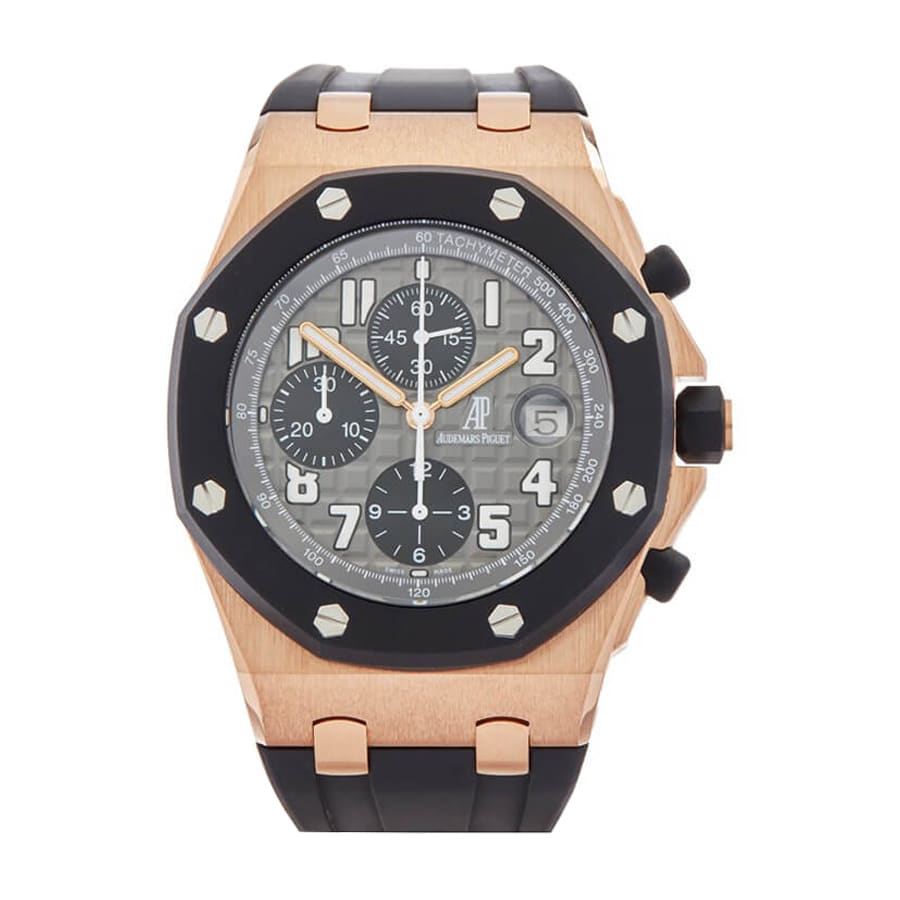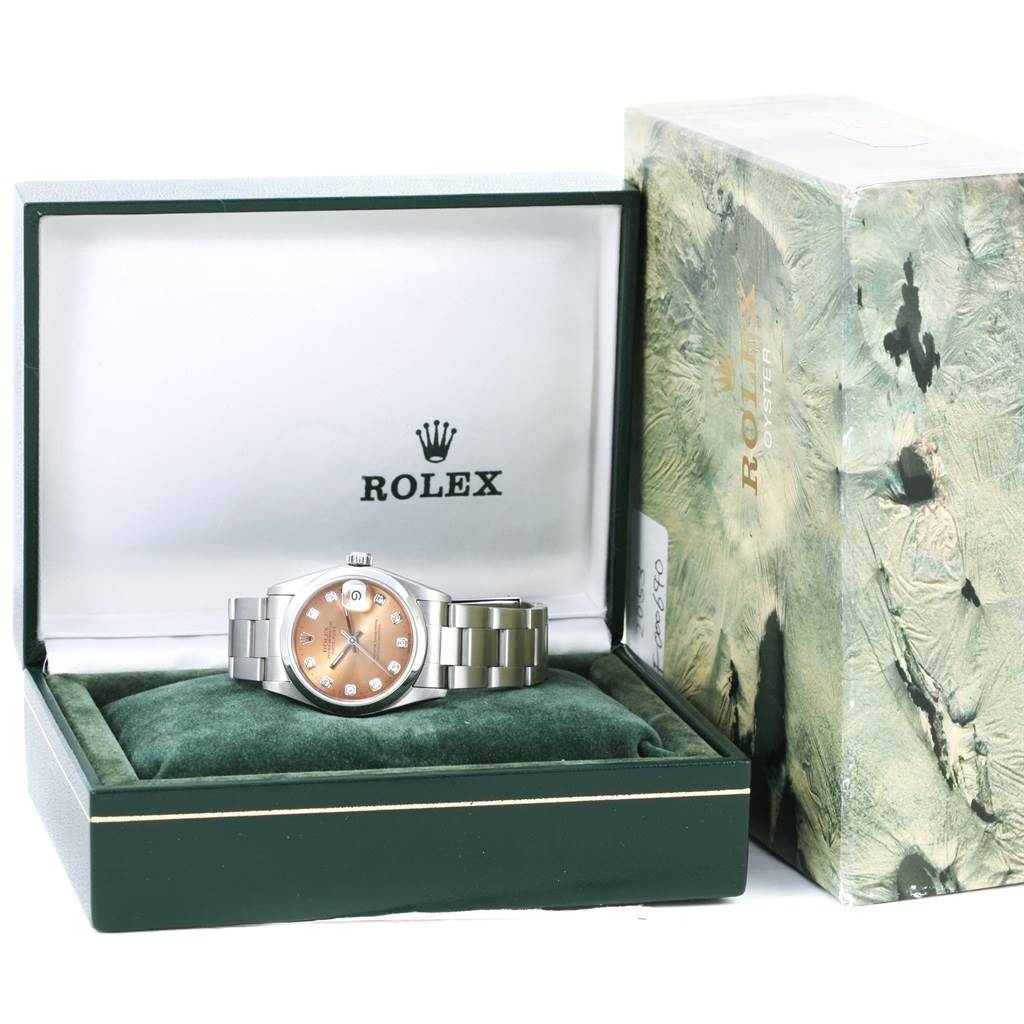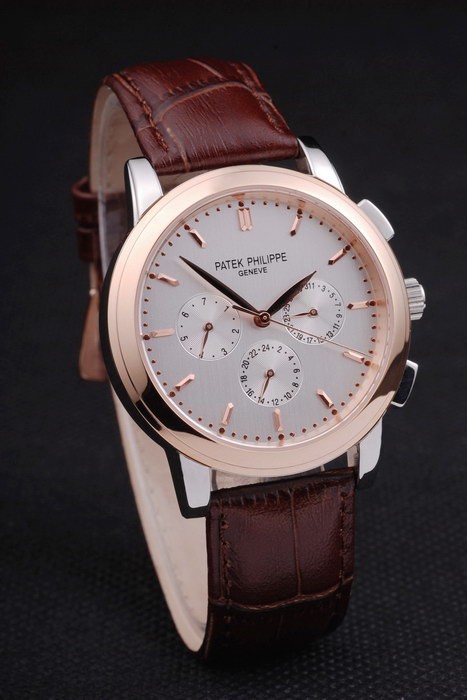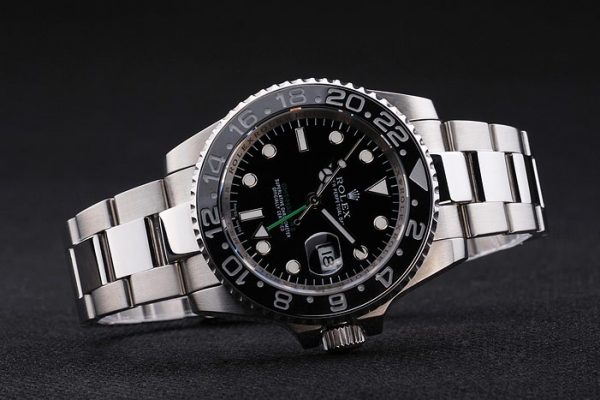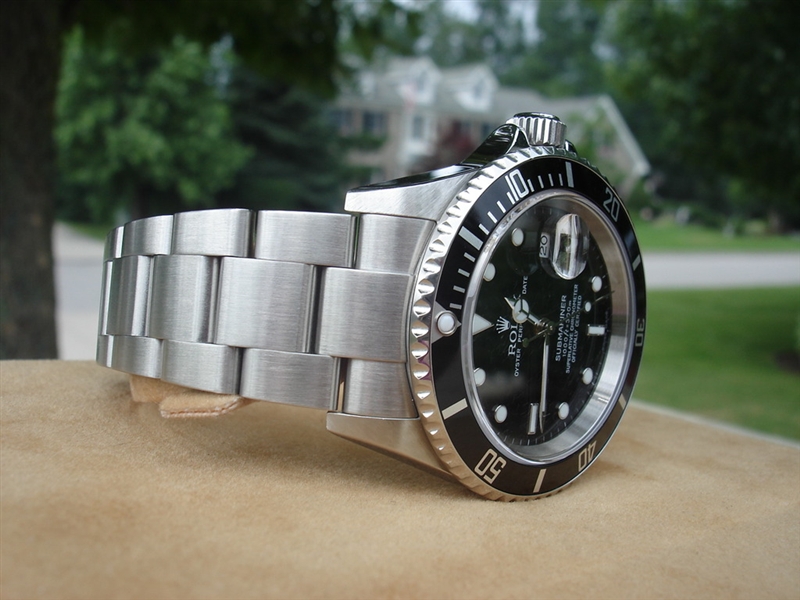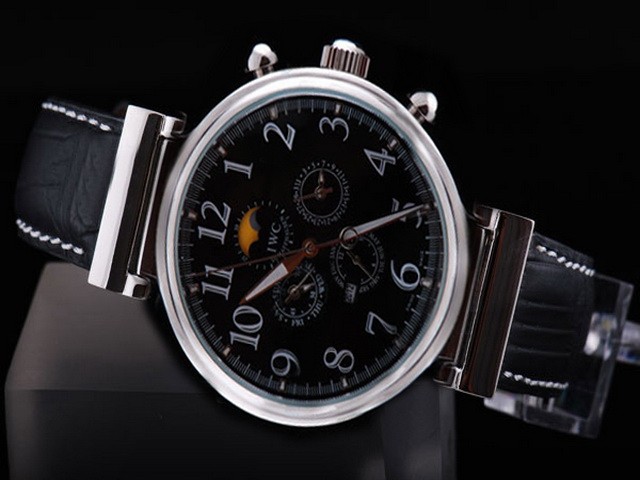The second generation of the Daytona appeared in 1988, both as a larger watch (40mm instead of 37mm) and as an automatic. Rolex used the base Zenith El-Primero movement to power these five-digit Daytona models, but modified the movement by about 50% and renamed it the Rolex 4030 movement. This generation (nicknamed the Zenith Daytona) is when Rolex began offering a wider variety of products for the Daytona line, including new material options such as white gold. However, Rolex paired the white gold “Zenith” Daytona ref. 16519 with a leather strap rather than the customary Oyster strap. 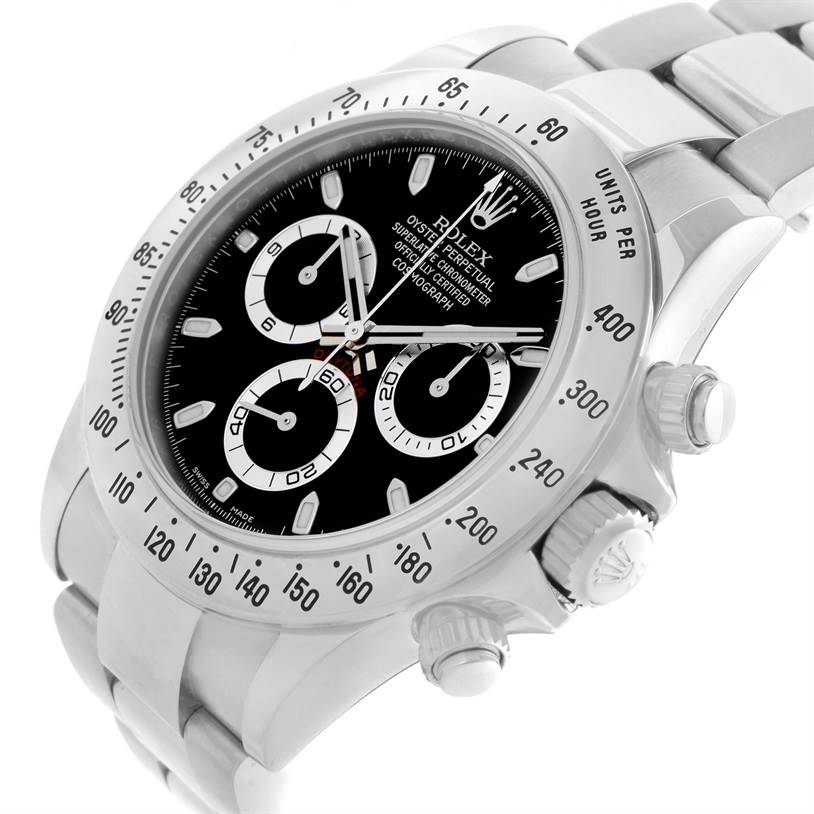
The six-figure reference Daytona watch made its debut at Baselworld 2000, where the previous Zenith El Primo movement was replaced by Rolex’s in-house caliber 4130. The COSC-certified Caliber 4130 automatic chronograph movement offers a number of advantages, including fewer components for greater reliability, a Parachrom hairspring for greater resistance to external factors, and a 72-hour power reserve. Shortly after the release of the first Daytona watches with in-house movements, Rolex added the all-white gold Daytona 116509 to the collection in 2004 with a white gold Oyster bracelet.
Another notable upgrade made to the white gold Daytona model was the meteorite dial. While Rolex watch the Ref. 116509 with the coveted extraterrestrial planet dial in the past, for 2021, the dial is unveiled alongside a striking black subdial, somewhat similar to the iconic Daytona Panda dial. The fascinating thing about the Rolex Meteorite dial is that it is a genuine meteorite collected from the famous Gibeon meteorite in Namibia, Africa. This material is then treated to reveal the distinctive stripes.
Today, collectors can choose from four standard dial colors: Rising Sun Blue, with dynamic red accents within the subdials; Black, with shiny diamond hour markers; Steel, with contrasting black subdials; and Meteorite, with black subdials. The collection used to include shiny mother-of-pearl, as well as sporty “racing dials” adorned with old-fashioned hour markers. However, these dial options have since been discontinued.
The truth behind the beautiful Royal Oak’s construction
A company had to muster real resilience to get through the quartz crisis. Still, Delmar managed to thrive rather than survive during those tough years, continuing to honour the traditional art of mechanical watchmaking. Nonetheless, they probably should be talked about more than they are, so we’ve been taking a closer look at their collection.
The main thing that surprised me about the Delma Montego is its unashamed design. It doesn’t quite have the masculine flair of a 1980s Schwarzenegger action movie, but it’s definitely a more refined version of that attitude. The three chronograph subdials are surrounded by bright brushed rings, almost shimmering with chrome, exuding the kind of Fast and Furious energy contained in a very stern style.
Delmar Montego’s attitude carries over to the case, but fortunately, it is only in spirit and not in size. The lugs slope from the side to the top of the squared-off lugs, blending wonderfully with the links at the end of the bracelet to form a thick wedge-shaped profile. The face is vertically brushed, but the bevelled edges are polished to give the watch a refined profile. The bezel is indeed wide, which has the compound effect of improving the tachymeter’s readability and further enhancing this strong character.
In terms of specifications, the Delmar Montego certainly is good. The screw-down pushers and crown ensure water resistance to 200 meters and, together with the luminescent, make it a fully capable dive watch. It’s 42mm in diameter, but the 49mm lug-to-lug makes it suitable for the average wrist or the smaller person who doesn’t mind a little extra weight on their arm. In terms of thickness, you won’t be sliding any cuffs on it as it’s only 16.2mm, but an automatic chronograph with good water resistance will never be slim.
If you know your movements, you’ll guess the Del Mar Montego movement. The triple register layout and the date complication, and case thickness are all hallmarks of the ubiquitous Valjoux/ETA 7750, which Delma Montego uses without adulteration. The 7750 reached its peak in the 1970s as automatic chronographs became more affordable and stylish, reaching saturation levels in sports replica watches. Nowadays, there are hundreds of derivative movements, but the original remains a solid choice. The 4Hz beating frequency and 48-hour power reserve are not impressive numbers in themselves, but the renowned reliability and affordable service are the real reasons why people love these movements.
The Delma Montego is available on solid steel or a hybrid Cordura strap. The straps have a hint of Jubilee style but ultimately serve the resilience of the watch. The polished centre link gives a sense of authority and glamour enough to balance everything out. The strap options are black with red stitching, green or blue to match the respective watch, and additional reinforcement around the pinholes.

The most complicated watch ever made by Rolex. Sky-Dweller
This week’s case is the Sky-Dweller, one of the strangest creations from the “Coronet” but one that has been popular with fans since its introduction.
Sky-Dweller is a rare watch in several ways. First, it is very rare because it is always in demand, although we have no less than three fine examples for sale at the time of writing. Secondly, it’s rare because it was designed from scratch for something different. Typically, Rolex designs watch for professionals and divide its watches into “Classic” and “Professional” designations on its website, but most of these watches have been around for decades.
It was intended for those who could afford to travel in business class or higher or had a jet or corporate travel account, as the Sky-Dweller was initially released only in solid 18-carat gold. This is a particularly classy model. The case material is the main reason, of course, but the signature fluted bezel, borrowed from DateJust, is enhanced here to give it an even finer look.
Interestingly, the Sky-Dweller has the most in common with the last model, the Yacht-Master II. Both models are examples of copy Rolex thinking outside the box. While most models stay within the preconceptions of Rolex design, the Sky-Dweller and Yacht-Master II demonstrate a creative flair. In addition, both models use the bezel as part of the motion control system, although they serve different purposes.
In 2017, Rolex made the Sky-Dweller two-tone (known as the Rolesor) with an Oyster bracelet, which helped the watch gain more fans because more people could afford it. Then, in 2021, Rolex improved the Sky-Dweller’s formality by adding the iconic Jubilee bracelet option. This matches the GMT-Master II, which is now also available with the Jubilee as an option.
All Sky-Dwellers are equipped with the caliber 9001 movement. This is a Manufacture Super Chronometer tested to +/- 2 seconds per day. This automatic movement also has a very long power reserve of 72 hours, surpassing most of the popular mechanical movements sold today, typically 40 hours. As is typical for Rolex, the movement is concealed by a closed case back.
As you would expect from a modern fake Rolex, the Sky-Dweller has some value retention capabilities. We found the blue dial version of the steel models commanded the highest prices on the pre-owned market.
While the Sky-Dweller may not have the iconic presidential strap of the Day-Date, the extraordinarily long history of the Datejust, or the iconic customer base of the Daytona, it is undeniably a classic in the Rolex lineup, and it would be surprising if it weren’t there. To see our collection of watches in person, contact us and schedule a viewing, and one of our experts will help you find the perfect timepiece.
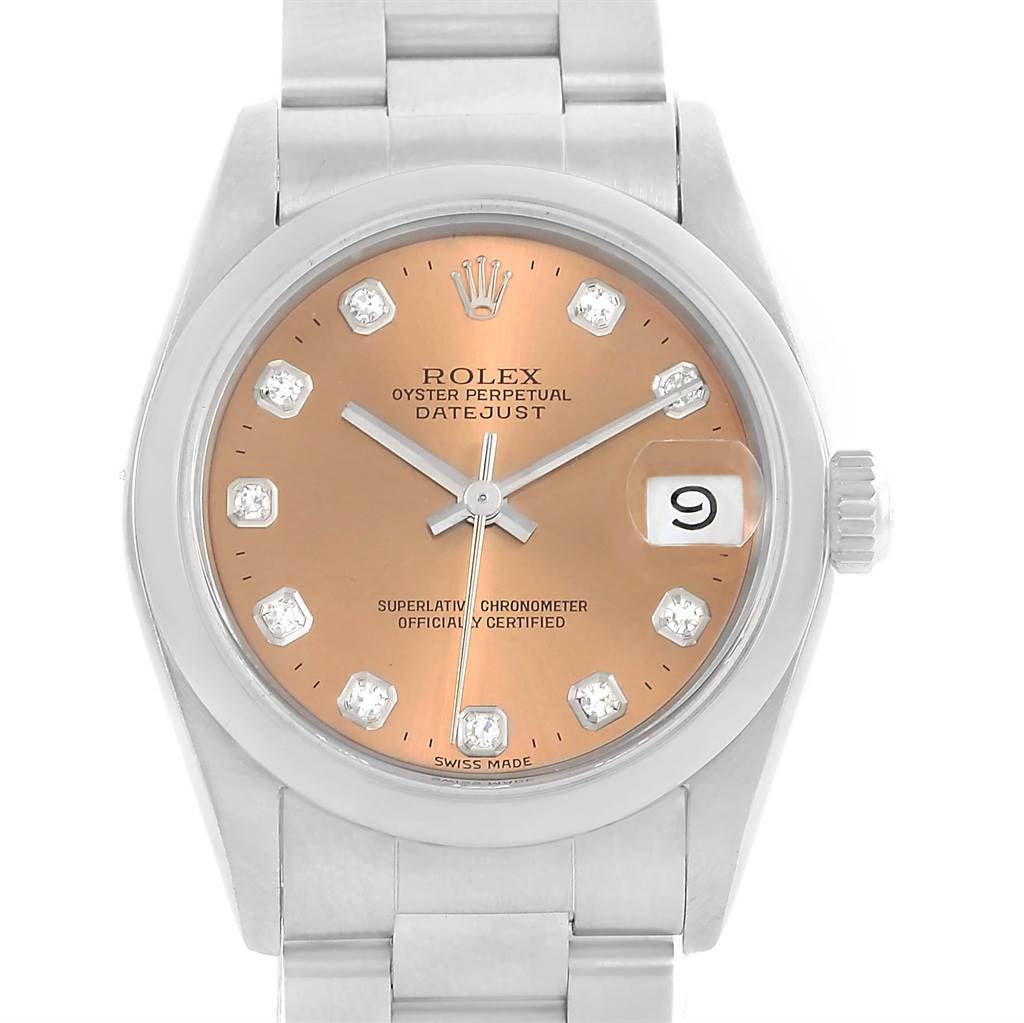
Chef Michael Chernow’s Rolex GMT-Master, a unique project
In my early days as an entrepreneur, I thought that once someone owned a Rolex meant they had made it. In 2013, I was celebrating a significant milestone in Los Angeles with our fifth restaurant, and I thought if there was ever a time for me to indulge in a perfect watch, it was now.
I sold some of my equity in the meatball store, and we opened our fifth location. We did a rough calculation of how many people we served meatballs to, and it was about 3 million, and most people eat four meatballs at a time, so we sold about 12 million meatballs. I was blown away by that number. This watch is a way to commemorate all the hard work I’ve put in for four years.
I never thought my first replica Rolex would be a gold watch. My dad wore a Seiko watch. I don’t know where that watch is today, but he always had that Seiko watch on his wrist.
In the spirit of my father’s Seiko watch, I always wanted to have an heirloom to pass down to my children. My family has never really had anything like that, something that has been passed down from generation to generation. I thought of that when I bought my GMT-Master, even though I didn’t have children yet.
I had the watch for three or four years when walking down 47th Street in New York’s Diamond District. When I stopped at a watch store, I told one of the salespeople that I didn’t like the Jubilee strap often found on the GMT-Master. I like the President collection.” I asked him, “How hard would it be to put a Presidential strap on this GMT I have?” He said, “If I wanted to pair them up, the bracelet would have to be customized to the head of the watch, and it would probably devalue the watch.” Well, the watch is going to be passed down to my son, then to his son, and so on,” I told him.” So I don’t really care what it’s worth. It’s a special thing.”
The salesman went to the back and came back with this fabulous presidential bracelet that used to be worn on the Day-Date and had some relaxed wear – the links were a little loose. There are some newer-looking bracelets that I could have gone with that had less wear and tighter links, but I’ve never really liked anything brand new. All the restaurants I’ve owned have been former restaurants; I like things that have lived for a while. It adds culture and character. He put the bracelet on the watch, and now I have the most extraordinary watch on my wrist. As far as I’m concerned, it’s the most beautiful Rolex on the planet.
When you think of some of the greats in history with muscular style, many had a Rolex on their wrist. Steve McQueen is one of my idols, and he wore a fake Rolex. I think Rolex appealed to the Renaissance people. People who weren’t one-liners. I do everything I can to live up to the standards of the replica rolex watch.
When we were starting the meatball store, I said one day I would buy a Rolex. I like to create Pinterest boards for all my restaurants for design inspiration, and I have a board on my Pinterest page that says “Everything I Want.” It’s just something I think is cool. I have a picture of a gold Rolex with a Presidential strap on it. It wasn’t a GMT-Master. But when I walked into that store in L.A. and saw the GMT on a black strap, I knew that’s what I wanted. Then, over time, I built the watch that I have today. Things don’t have to end where they begin.

Restaurant owner Simon Kim’s Rolex Datejust watch 116233
I came to the United States from Korea at the age of 13, not knowing a word of English, and when I was 16, my mother opened a restaurant in Tribeca and I became a bus driver. As a child, I loved wearing Swatch, which introduced an element of fun that resonated with the younger me. But my first real watch was a Breitling that my father gifted me when I graduated from high school. 
My father cared a lot about watches and still does. When I was growing up, he wore an all-gold copy Rolex. He inherited it from my grandfather. It looked so opulent. It jumped off his arm. Rolex became a brand that I aspired to.
I turned the New York location to delivery and partnered with Goldbelly. When we were allowed to open up for outdoor dining, we took the windows apart and used the materials to make tables. We started making ends meet, and throughout the process, I was able to keep every one of my managers and chefs on full pay. And when we opened in Miami this past February, I couldn’t have imagined a more successful restaurant opening.
When I was growing up in the restaurant business, as an ambitious person trying to progress in my career, a more expensive watch seemed to equal a better watch. I thought of watches as a status symbol and a symbol of wealth. But as I’ve matured – I’m now 38 and have two children – my perspective on this issue has changed. I think a watch should represent who you are. Just like a suit shouldn’t be on a man, a watch shouldn’t be on him either. For me, the most special watch is the one that best represents who I am as a person. And, it is the fake Rolex Datejust at https://ashleyout.com/replica.
Exchanging replica watches as gifts is a tradition at Korean weddings. My wife and I exchanged the Datejust, which to me exudes elegance and class. I wanted this exact model because it has a white dial with simple indexes, which I thought would go well with a white shirt. Wearing a white shirt is important for people in restaurants. It shows that you are professional and clean and that you are prepared to receive customers every day. The chefs wear white, too.
A more elaborate watch is not for me. My watch also represents punctuality. It needs a village to run a restaurant. I need to have an advertising team, marketing, production, and PR. There are so many moving parts that must be precisely coordinated and collaborated. Without respect for time, all these moving parts can’t come together.
The Patek Philippe Ref 5146 Is A Classic That Deserves Your Attention
This is the Patek Philippe Ref 5146 Annual Calendar. It is elegant, understated, and practical, a classic Patek Philippe for everyday wear. No, this is not a sports replica watch. Nor, for that matter, is its case made of steel. (Nor will you also won’t pay a ridiculous premium for either of these privileges.) Instead, it blurs the line between casual wear and formal wear. Wear it to the office, the bar, or the cocktail party – it’s incredibly versatile. Plus, the size of the case makes it comfortable on the wrist all day and night. However, you won’t see this model plastered all over Instagram. It certainly has a fan base, but the Ref 5146 is not the subject of hype. It’s for those who like to keep a low profile without compromising on quality. Or brand power. 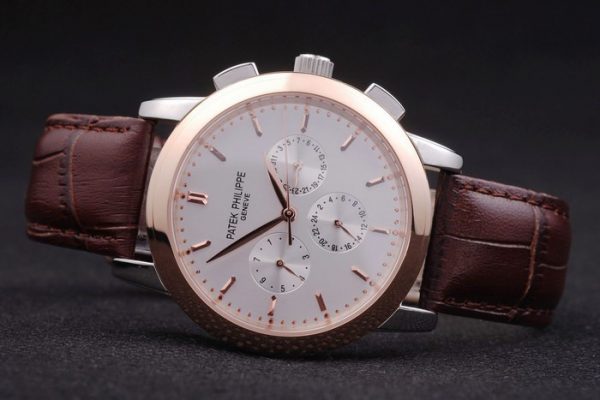
Like all annual calendars from Patek Philippe, the story of Ref 5146 begins with Ref 5035, the brand’s first annual calendar watch. It was also the first annual calendar complication to be introduced to the market. The process of creating a new complication began back in 1991 and took almost five years to perfect. As a logical development of the perpetual calendar, the concept was quickly accepted. Especially in view of its simplified functionality.
It also filled a gap in Patek Philippe’s pricing system. Offering collectors a viable alternative between classic Calatrava and grand complications. The so-called “small complication” strategy of the mid-1990s. As a result, replica Patek Philippe created the Ref 5035 to be suitable for everyday wear. The round case has a diameter of 37 mm and sloping lugs. And the dial is somehow able to display all the calendar indications without looking crowded. It’s an impressive achievement, although the beauty of the Roman numerals hasn’t aged well. At least for my tastes.
The Ref 5035 was followed in 1998 by the Ref 5036, which introduced the moon phase at 6 o’clock. (marking the first time this complication was paired with an annual calendar.) There is also a power reserve indicator at 12 o’clock. It also had a magnificent beige metal strap that was a huge hit. In fact, years later, it would provide the inspiration for the bracelet of the steel Ref 5960. Thanks to its 36 mm case size, things on the dial start to get a little… compact. It’s still legible, but there’s not much room to breathe.
Having replaced Patek Philippe’s first annual calendar in 2005, Ref 5146 needed to fill some big gaps. At least metaphorically speaking. But instead of doing anything too ambitious, the brand focused on perfecting its offerings. The case is yellow or white gold (platinum and rose gold were later added) and was expanded to 39 mm. This was still practical for everyday wear, but more reflective of the tastes and trends of the time. The extra space also opened up some breathing room for the dial.
Patek Philippe improved on this by removing the Roman numerals from the hour markers. Instead, the Ref 5146 has a more modern dial design with Arabic numerals at 3, 9, and 12 o’clock. The date is still displayed via an aperture at 6 o’clock. In a welcome decision, the brand retains the moon phase and power reserve indications of Ref 5036. This is despite the fact that the latter has a more elegant and refined layout.
Inside The Tudor Heritage Chrono: The Movement
Historically, TUDOR has achieved a more affordable price point than replica Rolex by using third-party movements rather than in-house movements, as its parent company does. In fact, many early Tudor watches were made using Rolex cases and common movements; however, this has changed in recent years and Tudor’s entire catalog now has its own unique design language, using cases and external components that are entirely exclusive to the brand.
Although TUDOR now produces watches with its own in-house movements, there are still many TUDOR models are powered by third-party movements (or modified versions of off-the-shelf movement designs). One example of this is the Tudor T401 movement within the Heritage Chrono Blue, which is essentially an ETA 2892 movement with a Dubois Depraz chronograph module bolted to the top of the dial side. A particularly nice touch is that while Tudor’s T401 movement is a modular chronograph, the pushers on the Heritage Chrono Blue are aligned with its winding crown, which helps maintain visual symmetry when looking at the side of the case. 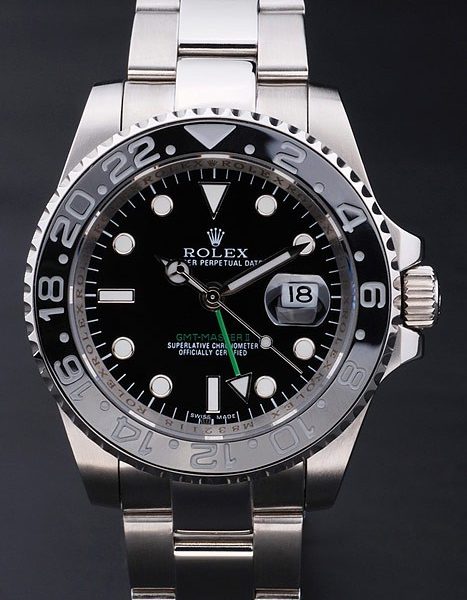
Since the Tudor Heritage Chrono Blue’s caliber T401 is based on the ETA 2892 movement, it has a frequency of 28,800 BHP (4Hz) and provides users with a 42-hour power reserve. However, TUDOR has modified the standard Dubois Depraz chronograph module by adding a 45-minute counter (instead of a 30-minute counter) and abandoning the hour sub-dial altogether in favor of a more streamlined two-dial layout. Unlike the in-house movement in the Black Bay Chrono, the T401 movement in the Tudor Heritage Chrono Blue is not chronometer-certified. However, since TUDOR modifies, refines, and assembles these movements in-house, it can be assumed that the chronometric performance is in line with what you would expect from the TUDOR brand, regardless of whether it is actually chronometer-certified or not.
Although the TUDOR Heritage Chrono Blue has been in production since 2013 (the Heritage Chrono itself has been in production since 2010), TUDOR still lists the replica watch as an option on its website. The Heritage Chrono collection currently includes six models – spanning three dial colors (blue, black, and gray) – each available with either a stainless steel strap or a striped fabric strap. While the hands and dial of the Tudor Heritage Chrono Blue differ slightly from the black and gray, the retail price is the same for all colors, with the Tudor Heritage Chrono Blue priced at $4,200 for the strap and $4,525 for the strap-equipped version.
Like most Tudor watches, the Heritage Chrono Blue has held its value very well on the secondary market, trading close to its original new retail price even for a used watch from a few years ago. Generally speaking, Tudor watches do not appreciate in value as immediately as Rolex replica watches, and only a few models have long waiting lists at the retail level. This means you can find a small discount by buying on the pre-owned market, although even the most affordable pre-owned Tudor Heritage Chrono Blue watches will cost around $4k.
Of the three different dial color options available in the Tudor Heritage Chrono collection, the blue version is often considered the most desired by collectors. While all three variants have a small amount of bright orange, the different styles of hands and hour markers on the Heritage Chrono Blue add to its refined look and work with the model’s bright blue accents to create a truly striking and cohesive overall package.
One of the main reasons people love the fake Rolex “Paul Newman” Daytona watch is its funky dial, which exudes an inherent vintage appeal. While the Tudor Heritage Chrono Blue is distinctly different from the vintage Rolex Daytona, it does meet similar aesthetic requirements – and at an entirely affordable price. While the vintage Paul Newman Daytona will set you back at least six figures, the TUDOR Heritage Chrono Blue is under $5k and offers a wonderfully fun and playful aesthetic from the golden ear of mechanical sports watches.
What do you get for your money with Rolex?
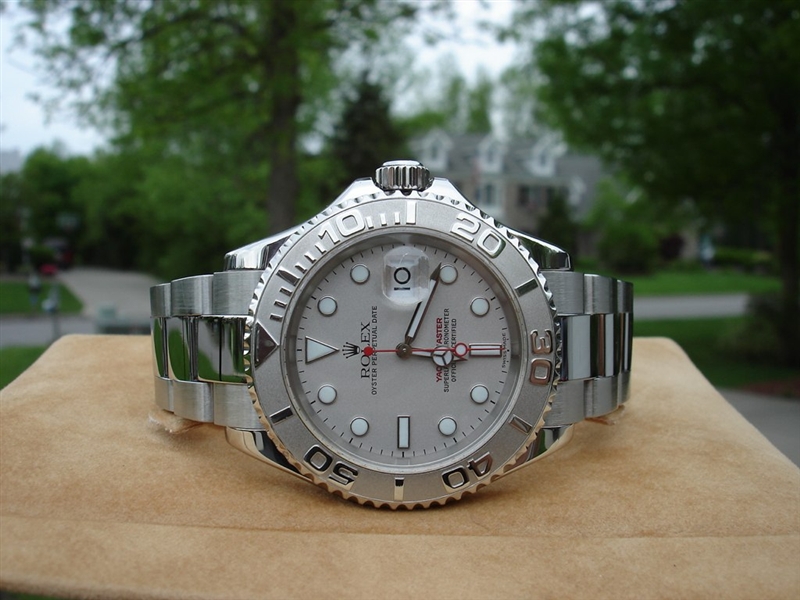 Rolex has created a new alloy for its hairsprings called Parachrom. It also produced Cerachrom, a revolutionary ceramic material for bezels and inserts that is both scratch- and fade-resistant. In addition, Rolex forges most of the metals used in its watches in its own in-house foundry to ensure maximum quality, durability, and aesthetics.
Rolex has created a new alloy for its hairsprings called Parachrom. It also produced Cerachrom, a revolutionary ceramic material for bezels and inserts that is both scratch- and fade-resistant. In addition, Rolex forges most of the metals used in its watches in its own in-house foundry to ensure maximum quality, durability, and aesthetics.
Different from other manufacturers, Rolex uses 904L stainless steel, an incredibly strong material that is extremely resistant to corrosion and erosion and retains a luster like no other. It is also particularly difficult to machine, requiring Rolex to invest heavily in new tools and machinery.
Moreover, Rolex is one of the very few companies that creates and manufactures every movement in-house, instead of buying generic movements from companies like ETA and modifying them, giving them complete control over every aspect of their construction.
When you really break down the cost, replica Rolex watches are actually not expensive at all. Yes, you might look at the entry-level model and decide you can spend $5000 on something else. However, you will be hard-pressed to find something that has held its value over the years – especially in the luxury industry.
Some Rolex watches sell for significantly more than their original retail price, but this only applies to a few models. If you buy them brand new, some of the watches Rolex offers will depreciate a little bit after you leave the store with them – it’s just a fact of life. But there is a definite financial glass-bottom line that they won’t exceed – unlike, say, a top-of-the-line car.
However, if you buy a watch off the used market, the monetary loss has been taken by someone else, translating into huge savings on the price – and chances are you’ll be able to sell your piece for roughly the same price in the future, if needed, or if you want something different in your collection. You can purchase a Submariner today and sell it again in 10 years for a price similar to what you paid when you bought it, meaning you’ve been wearing the watch icon for 10 years completely free.
The popularity of some of Rolex’s stainless steel sports watches has only grown, and so has the amount collectors are willing to pay for them. Even if you don’t want to part with your fake Rolex, you can still rest easy knowing that with proper care, your watch will easily outlive you and can be passed on to the next generation to enjoy – few other items can make a similar claim.
Amazing new black Rolex Datejust II 116334
The new Rolex Datejust II 116334 made its debut at Baselworld 2009, but the world wasn’t quite ready for the leap from a 36mm to a 41mm case diameter. Fans were not enthusiastic about this major change. They had fallen in love with everything about the replica Rolex Datejust, and they weren’t happy with the upgrade. It was only after a period of time and extensive marketing efforts that Rolex enthusiasts began to embrace the new version and its benefits.
If you know anything about Rolex watches, then you probably already know that the Datejust is one of the longest production models in the Rolex catalog. Originally introduced in 1945, this watch has had a successful evolution in aesthetics and functionality for over seventy years. The final step in its ongoing upgrade was to enlarge the case to make it a more modern dress watch, thus making it more appealing to a contemporary generation that values trends and style.
Today, the replica Rolex Datejust II is as beloved as the classic design. Although the case is larger and bolder due to its delicate construction, it does not feel heavy on the wrist. The undoubted advantages of the enhanced 41 mm case are the wider dial and the higher readability. To appeal to a wider audience, the dial is available in a large selection of colors, hour markers, and hands. 
The dial also looks very accurate. I really like the wide luminous hour markers and the large Rolex crown logo at 12 o’clock. The design of the dial enhances readability in all light conditions. The silver hands are coated with luminescent material and are the same shape and size as the genuine article. The cottage version is also equipped with a scratch-resistant sapphire crystal and a 2.5x magnifying glass above the date.
The fake Rolex Datejust II is a very popular choice in the market thanks to its sporty vibe and smart design. It is the ideal timepiece for the modern man who appreciates a classic design reinterpreted in an attractive and modern way. Overall, I’m quite happy with my copy. It looks and feels very authentic, and with the automatic movement it comes with, it has proven to be quite reliable. The only thing wrong with it is the strap, which is the wrong style, but I have ordered the correct Oyster strap, so this minor flaw will soon be corrected and I will happily wear my Datejust II 116334 replica as often as possible.
Newly Established IWC Pilot’s Watch Timezoner Chronograph
The Timezoner from IWC is the ideal travel companion. A quick turn of the bezel reveals the new time zone, while the built-in fly-back chronograph makes this watch an exceptional timepiece at an affordable price. Traversing time zones with the fake IWC Pilot’s Watch Timezoner Chronograph is a reliable task, not least because IWC’s expertise in pilot’s replica watches dates back to 1936. Once the programming of the time change has been completed, it always works perfectly.
The programming sequence relies on a special arrangement between the case and the movement. To set this world-timer correctly, you first press the rota-table bezel onto the stainless steel case, which has a diameter of almost 46 mm. When positioning the bezel, you must press the rotating ring down firmly at two opposing points and ensure that it snaps securely into the desired setting. This is not difficult as the swivel ring snaps into place with a click that you can hear and feel. The click indicates that the adjustment process is complete. Now, the rota-table ring cannot be repositioned incorrectly. 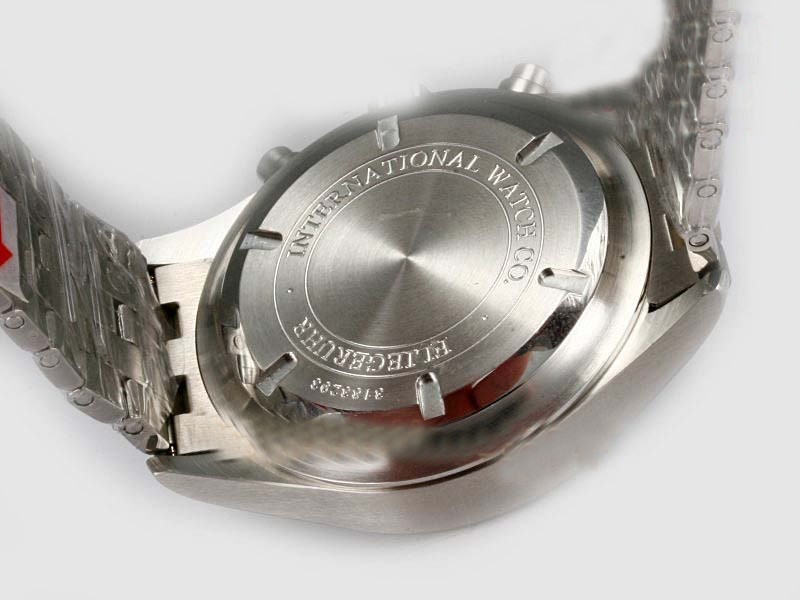
The next player in the re-positioning play is the crown, which must first be rotated to the left to unlock it. When you pull the crown out to the extracted position, the movement allows you to reset the hands of the replica watch. Unusually, the screw-down crown does not offer a quick reset of the date in the middle position, as this role is played by the rotatable bezel. This is a particularly handy feature at the end of a month with only 30 days in it. If you turn the bezel clockwise in hours, the date switches every time the hour hand and the other 24-hour hand pass the midnight position. Now you continue to turn the bezel, which will push the hands to the correct time in the local time zone. The only detail to note is that the 24-hour hand must also show the correct local time. Its red arrow shows the corresponding time on a smaller 24-hour circle near the center of the dial.
And then you’re done! From now on, you can simply turn the bezel at any time and reset your fake watch in hourly increments to display the time in the new area. If you are traveling east, you can turn the bezel clockwise. This is logical because the sun is already in the east, so the time will be later. If you are traveling west, you turn the rotatable bezel counterclockwise because you are going “backward” to an earlier time. The date display always switches with the hour hand, either forward or backward.
If you live in a foreign country and want to know the time at home, or if you are at home and want to know the time in the rest of the world, simply apply even downward pressure to the bezel and turn it until the desired position swings to 12 o’clock: a fascinating pastime.

